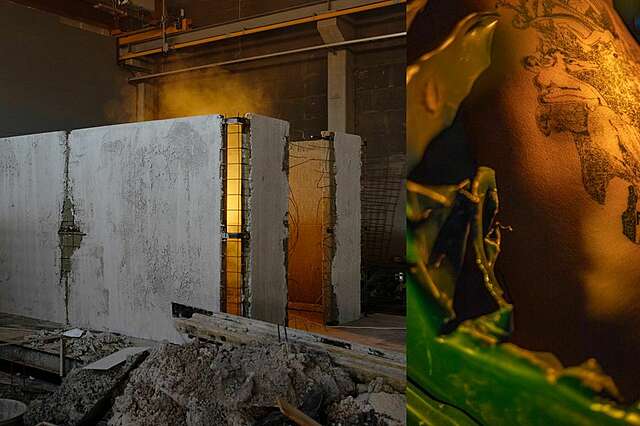Has colour disappeared from the architectural toolbox?

The latest issue of the Finnish Architectural Review explores misconceptions about colour, formulates rules of thumb for designers and considers who and what controls colour in the built environment.
In recent years, Finnish new construction has been dominated by a monochromatic palette of colours that relies on the materials' own colouring. When the Finnish Architectural Review published its previous colour issue in 2010, vibrant accent colours and dizzying pixellated facades were all the rage in architecture.
"A counter-reaction was, no doubt, necessary, but when all one sees in new residential areas are dire-brown, murky-grey and drab-yellow brick facades, the lack of variety does begin to pall," says Kristo Vesikansa in an editorial about the cycles of colour trends.
"Not even the revival of interest in1980s postmodernism has managed to inspire colourful or playful design in Finland, but has rather veered towards a highly disciplined articulation of form and a monochromatic palette."
But why put out an issue focusing on colour now when the very phenomenon of colour seems to have all but vanished from an architect's toolbox?
In the theme issue, colour researcher Saara Pyykkö explores the often misused concepts of colour and the latest findings in colour research. Recent architecture graduates Enni Heiskanen, Matti Pärssinen, and Emmi Santamäki highlight that colour is currently not an integral part of architecture education at Finnish universities.
However, colour is worked on at different scales, from town plans to paint pigments. Architect Kati Winterhalter, a restoration and building research specialist, writes about the various layers of colour and how to read them. Architect Suvi Tyynilä, lighting designer Roope Siiroinen, Professor Pentti Kareoja and colour and material designer Anni Rantasalo talk about how colour is reflected in their work.
The projects featured in the issue highlight the different ways in which colour is used in contemporary architecture. In student housing in Jyväskylä, a pale brick shell contains an intensely red central hallway, while the identity of the Kirjailijakortteli block in Helsinki is built on a dialogue between three different-coloured residential buildings.
Lamminrahka School Centre in Kangasala, a nominee for this year's Finlandia Prize for Architecture, represents the tradition of relying on the materials' natural colours. In the Supreme Administrative Court renovation, the architects scrupulously followed the pastel colour scheme of the previous renovation in the 1980s and partly created their own interpretation of the original 1950s colour scheme.


